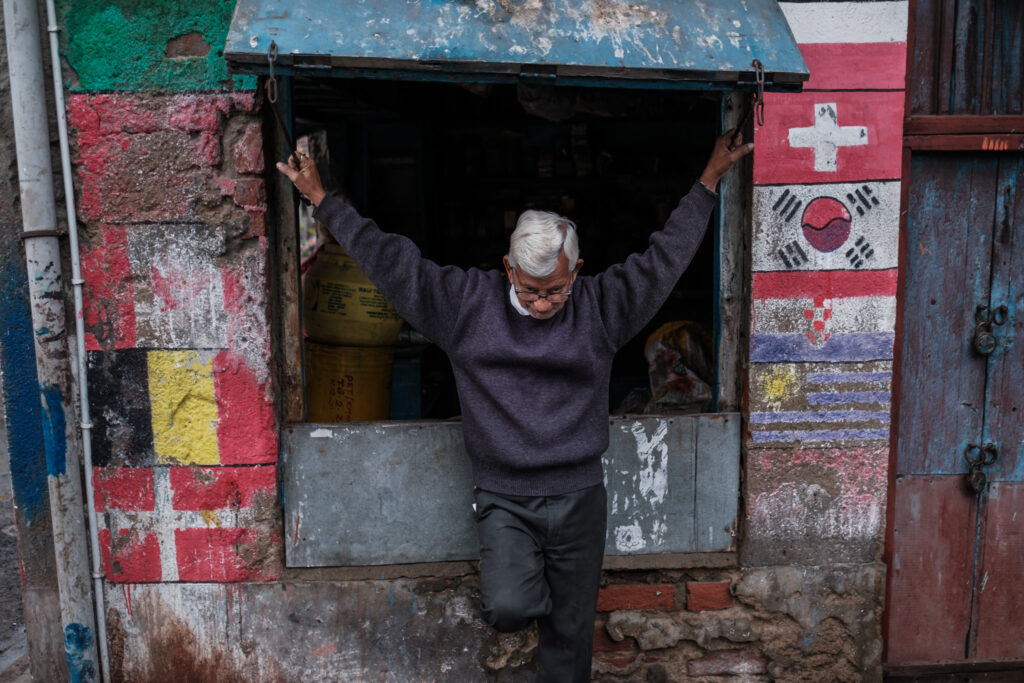Shoot What Matters: How Personal Conviction Shapes Photographic Vision

At the heart of meaningful photography lies this very simple question: “What do I care enough to notice?”
It is a question that has nothing to do with equipment or focal lengths or exposure settings, and everything to do with the your inner landscape as a photographer. While cameras record what is placed before them, photographers notice only what resonates with them; and that resonance is never neutral.
Voice and Vision
When you walk through the world with a camera, thousands of potential images pass you by. Most of them never even register. But every so often, something tugs at your attention: a moment, a gesture of connection, an expression, they way light plays across a space. This tug is not random; it is your values, your worries, your curiosities telling you: “, “Look, here is something that interests you.” And in that moment, photography becomes less about capturing the world as it is, and more about revealing what the world means to you.
This is why two people can stand in front of the same scene and create entirely different photographs. Where one sees loneliness; another sees strength. If one notices ageing and decay; another notices character graven from the passage of time. What each person photographs is shaped by what they carry with them — their histories, their beliefs, their hopes, their passions. The camera captures the scene; the photographer decides the story.
This is also why photographing only what is “pretty” will eventually feel hollow. Many photographers have a trajectory in their artistry: they begin by looking for scenes and subjects that please the eye, chasing postcard images, or looking to emulate the work of those they admire. When they realise that this simply produces images lacking in what they’re interested and invested in, their gaze turns inwards and they begin to mature into photographers with vision.

Meaningful Photography
Meaning is what makes what we do in photography deeply satisfying. Our best images aren’t driven by the hunt for aesthetic perfection; they come from the pursuit of whatever makes us glow inside. That “glow” might be a sense of wonder, outrage, tenderness, nostalgia, or curiosity. It might be the love of serene moments or the thrill of chaotic ones. But whatever it is, it energises the act of seeing. It buzzes with a kind of internal electricity that shapes not just what we photograph, but how we approach it.
When you care about something, you approach it differently. You stay with it. You pay closer attention. You return to it again and again, not because you’re chasing the perfect shot, but because it feeds something in you. The quality of the images that emerge from this place is different: more intimate, more grounded, more alive.
The key is to trust your own instincts. Trust the pull you feel when something catches your eye for reasons you can’t articulate. Trust the themes you keep returning to, even if they seem small or ordinary. Those instincts are signposts pointing toward your photographic voice. Certainly, look at the work of others, watch tutorials and commentary online, but use what you consume to help you gain a better understanding of what turns on your creative drive.
In the end, photography is not just about seeing; it’s about caring enough to see. And when you photograph from that place — that internal glow — your images begin to carry a different kind of weight. They start to feel inhabited, infused with presence. They become more than compositions. They become expressions.

Case Study: Street and Travel Photography
Here’s a personal exploration of this concept. As a photographer, I am fascinated by human stories. Not just people as subjects, but people as living expressions of who they are and what they’ve been through. It makes me a bit of a sticky beak because this curiosity drives me to want to discover their stories. This kind of interest quietly shapes which moments I see. It determines where the my gaze lingers, what details tug at the edges of their awareness.
For instance, when I’m walking through a city, I’m not drawn first to landmarks or postcard vistas. I watch instead for the fleeting choreography of human lives unfolding in the spaces. These moments hold more gravity for me than any iconic skyline, because they reveal aspects of the human condition: connection, emotion, resilience, energy. This is why I tend to inhabit busy spaces when I’m traveling — because this is where the human stories reside: thriving markets, festivals, people working out in the open…
This sensibility shows up in small decisions I make as a photographer: where to stand, how long to wait, when to approach and engage. I may spot a moment that may happen; I then wait, watching and observing, and get excited as things begin to flow towards the crescendo of that moment.
Environmental details become interesting. A cluttered balcony, a messy workbench, a half-open door — each suggests something about the rhythms and pressures of the lives lived alongside these setting. I’d like to think that my images reflect this curiosity.

Ultimately, every photograph is a reflection of an inner stance: the curiosities that pull at us, the emotions that rise when we encounter the world. What we care about shapes what we notice, and what we notice shapes the photographs we make. Technique refines an image, but vision gives it its heartbeat.
Tips to discover and develop an understanding of your inner life and voice
Here are some suggestions on how you can explore and understand your inner photographic life:
- Look at your favourite images. Do you remember how you felt when you took them? What was going on in your mind? What did you feel when you took the images? Why?
- Write a list of your favourite things — but keep them abstract and subjective rather than concrete and palpable. What makes you feel good? What triggers your curiosity? For example, where you might write “chocolate”, think instead of what it is about chocolate that triggers the feelings of happiness or fulfilment for you. Perhaps it’s “taking a moment to savour something that feels rich and textured” or “A taste or sensation that takes me out of the hum drum”. This can help you refine why you feel something, which can help prompt thoughts about what scenes and moments appeal to you.
- Write about your favourite people: what makes you feel positive about them? What is it about their humanity or their stories that appeal to you. Distil these into words that you can review and reflect on when thinking about your photography.
- Take a walk in a novel location, one that feels as if you’re going to somewhere that feels fresh or different. Observe actively — in other words, don’t just dwell on your own thoughts, but be proactive in looking around. Take note of what catches your eye and why.
- Photograph something that you like. Try and place it in a location or light that helps convey how you feel about the object. It could be an heirloom, or a favourite souvenir from a long-remembered holiday. Try and photograph it in a way that helps show your fondness for it (or what it triggers in you).
Coda
When we allow our inner life to guide our seeing, photography becomes more than the pursuit of beautiful pictures. It becomes a way of paying attention, a way of affirming what we value, what we wonder about, what we wish to understand. In the end, every image is a quiet declaration: This is what mattered to me, in this moment, in this world.


No Comments